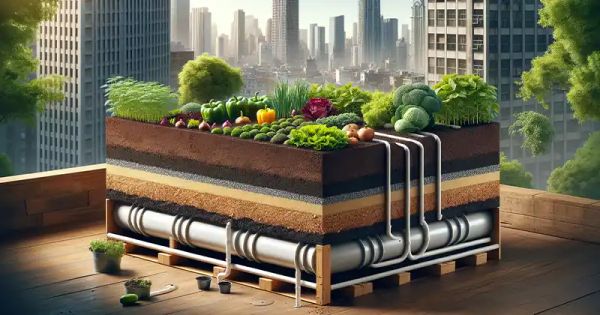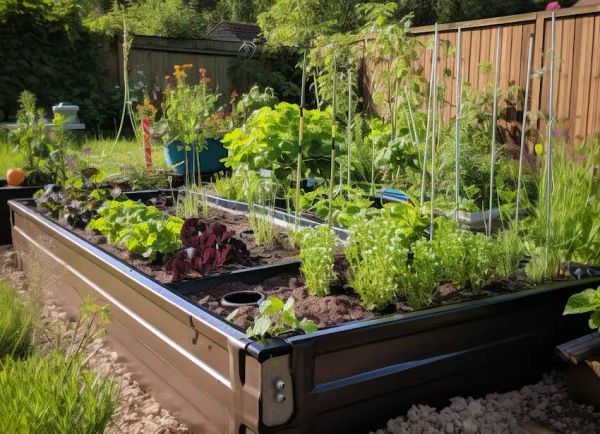In cities where green spaces are rare and concrete dominates, the wicking bed emerges as a sustainable solution, transforming limited areas into vibrant and productive gardens. Not only does the wicking bed enable innovative urban gardening, but it also champions water efficiency in the face of drought and wastage.

The Wicking Bed: A Clever System
Think of a wicking bed as a self-watering raised garden. It harnesses the power of capillary action, allowing plants to draw up moisture from a reservoir below, significantly reducing the need for frequent watering. Picture this: an ‘L’-shaped pipe evenly distributes water throughout the bed’s length and rises above the soil, making it easy to monitor and refill the reservoir.

Creating Your Own Garden Marvel
To build a wicking bed like the one shown in the photo, follow these instructions carefully to ensure the water distribution system functions effectively:
Choose the Perfect Container: Start with a sturdy container with ample space for soil and a water reservoir beneath. Consider using a custom wooden frame, an old bathtub, or a repurposed large planter.
Seal It Tight: Line your chosen container with a high-quality waterproof membrane to create the water reservoir. Make sure it’s completely sealed to avoid any leaks.
Install the ‘L’-Shaped Pipe: Lay a PVC pipe horizontally along the bed, above the aggregate. The pipe should have perforations along the flat section to distribute water evenly. It then bends upwards at one end, extending above the bed to serve as the fill point.
Create the Aggregate Layer: Fill the bottom of the container with a layer of coarse aggregate, such as gravel, and ensure it’s level. This is where the water will be stored.
Barrier for Soil: Cover the aggregate and horizontal part of the pipe with geotextile fabric. This fabric prevents soil from washing into the reservoir while allowing water to wick upwards.
Add Nutrient-Rich Soil: Pour a high-quality soil mix on top of the fabric. Choose a soil appropriate for the plants you want to grow, whether it’s vegetables, herbs, or flowers.
Overflow Outlet: Install an overflow valve or pipe where the soil meets the aggregate. This is crucial to prevent waterlogging by allowing excess water to escape.
Plant and Mulch: Plant your seeds or seedlings into the bed and cover the surface with organic mulch to minimize evaporation.
Water and Observe: Fill the reservoir through the vertical pipe until water starts to overflow. Then sit back and watch as your plants thrive, drawing up water from beneath with minimal maintenance.
By embracing this self-watering garden design, you are taking a step towards self-sufficiency and resilience in urban gardening. It’s a commitment to a sustainable future where resource conservation and green living flourish in our cities.




